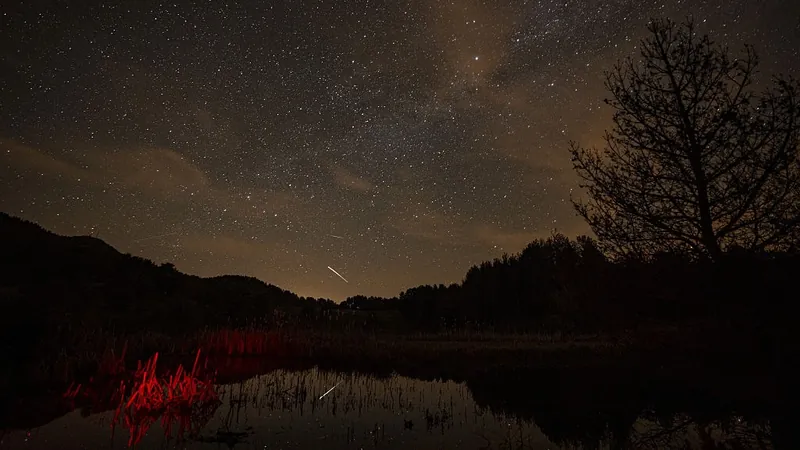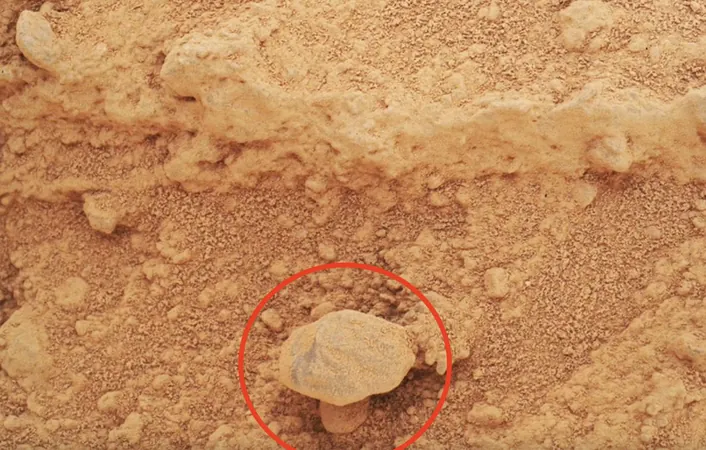
Astronomical Wonders: The 2025 Lyrid Meteor Shower Lights Up the Night Sky!
2025-04-23
Author: Wei Ling
Celestial Spectacle of the Lyrids
Sky watchers were treated to a breathtaking display during the 2025 Lyrid meteor shower, witnessing a dazzling peak of 10 to 20 meteors cascading across the heavens.
Ancient Origins of the Lyrid Shower
Taking place annually from April 16 to 25, the Lyrid meteor shower is a remarkable consequence of Earth traversing through the cosmic dust left behind by the ancient comet C/1861 G1 Thatcher. This comet, which takes about 415 years to orbit the sun, has been showering our planet with meteorite trails for millennia. Remarkably, the first historical records date back to 687 BC, credited to Chinese astronomers, marking it as the oldest known meteor shower still active today.
Photographers Ready for the Show
Astrophotographers from around the globe eagerly prepared for the meteor spectacle of 2025. Thanks to the moon’s unobtrusiveness, stargazers could relish an uninterrupted view of the night sky as Earth plunged into the densest part of Thatcher's debris trail. Check out these stunning captures from the event!
Astounding Shots from Turkey
Astrophotographer Utku Ucrak shared an incredible shot featuring multiple meteors streaking over the enchanting Karagol Geosite in Ankara, Turkey. His efforts during the peak resulted in several vibrant meteor trails lighting up the night.
Reflecting Beauty in Nature
Another captivating image comes from Muhammed Selim Korkutata, who captured a Lyrid meteor shimmering in the reflection of a water body from Mount Isik in Kizilcahamam, Turkey. This breathtaking moment adds a picturesque twist to the heavenly spectacle.
Artistry in Germany
In Germany, photographer Sebastian Voltmer artistically showcased a 'shooting star' flaring against the majestic backdrop of the Milky Way, reminding us of the magnificent beauty of our universe.
A Fiery Encounter Over Australia
On April 21, Brisbane, Australia, witnessed a spectacular fireball illuminating the evening sky. Fireballs, the brightest of meteors, can rival Venus’s glow in the night. Experts suggest this fiery apparition may not have been connected to the Lyrids, as its timing appeared too early in the night.
Community Stargazing
In Minnesota, stargazer EricTheCat shared a compilation of mesmerizing Lyrid streaks, while Rodamort creatively captured star trails and rare meteors using time-lapse techniques in Northern Idaho. These community efforts showcase the shared excitement and wonder of meteor watching.
Last Chance for Viewing!
The Lyrids will continue to dazzle until April 25, so it’s not too late to step outside and gaze at the celestial wonders. For optimal viewing, find a spot away from city lights and look towards the constellation Lyra, particularly near the brilliant star Vega.
Expert Tips for Meteor Watching
To maximize your meteor spotting potential, locate Vega, then scan about 40 degrees away from that star towards where the sky is darkest overhead. A practical tip is to extend your arm, where each fist denotes roughly 10 degrees—stacking four will guide you to the right patch of celestial canvas!
Share Your Stellar Discoveries!
Capturing the beauty of these sky displays is a great achievement! If you have astrophotography to share, don’t hesitate to submit your coolest shots along with your name and location to Space.com.



 Brasil (PT)
Brasil (PT)
 Canada (EN)
Canada (EN)
 Chile (ES)
Chile (ES)
 Česko (CS)
Česko (CS)
 대한민국 (KO)
대한민국 (KO)
 España (ES)
España (ES)
 France (FR)
France (FR)
 Hong Kong (EN)
Hong Kong (EN)
 Italia (IT)
Italia (IT)
 日本 (JA)
日本 (JA)
 Magyarország (HU)
Magyarország (HU)
 Norge (NO)
Norge (NO)
 Polska (PL)
Polska (PL)
 Schweiz (DE)
Schweiz (DE)
 Singapore (EN)
Singapore (EN)
 Sverige (SV)
Sverige (SV)
 Suomi (FI)
Suomi (FI)
 Türkiye (TR)
Türkiye (TR)
 الإمارات العربية المتحدة (AR)
الإمارات العربية المتحدة (AR)